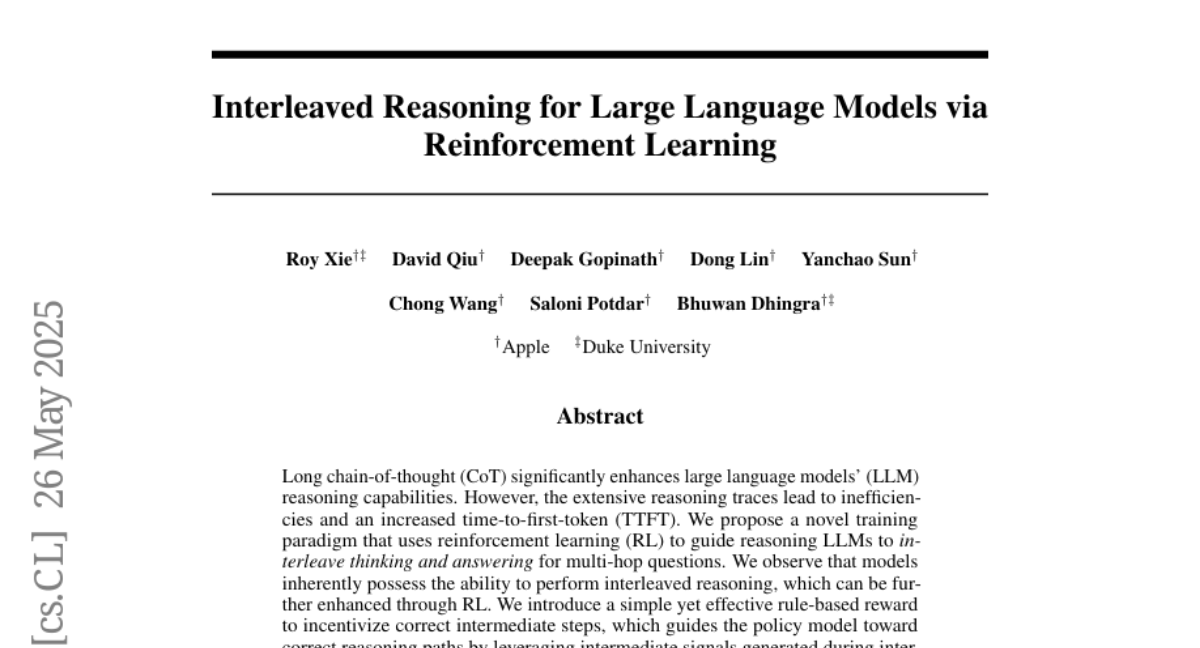Interleaved Reasoning for Large Language Models via Reinforcement Learning
Roy Xie, David Qiu, Deepak Gopinath, Dong Lin, Yanchao Sun, Chong Wang, Saloni Potdar, Bhuwan Dhingra
2025-05-27

Summary
This paper talks about a new way to train large language models so they can solve complicated questions more efficiently and accurately. The method uses reinforcement learning to teach the model to mix its thinking process with answering, instead of doing all the thinking first and then answering at the end.
What's the problem?
The problem is that when language models try to answer multi-hop questions, which require several steps of reasoning, they often waste time or make mistakes because they separate their thinking and answering too much. This can make the process slow and less effective.
What's the solution?
The authors introduce a training method where the model learns to interleave, or mix together, its reasoning and answering steps. They use reinforcement learning, a technique where the model gets rewards for making good decisions, to guide it toward being more efficient and accurate as it works through each part of a complex question.
Why it matters?
This is important because it helps language models become better at solving tough problems that need several steps of thought, making them more useful for things like homework help, research, and any situation where deep reasoning is needed.
Abstract
A reinforcement learning-guided training paradigm enhances large language models' reasoning efficiency and performance for multi-hop questions by interleaving thinking and answering.